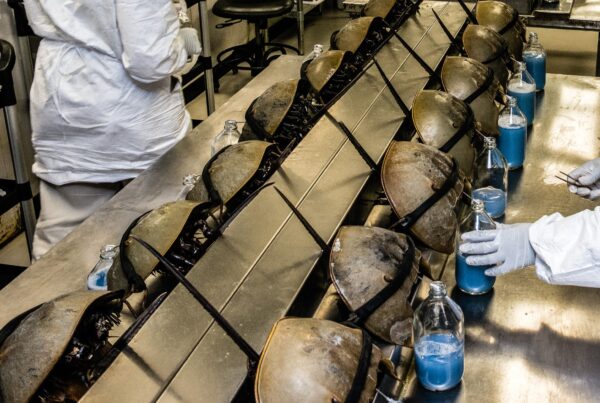Watch the video: Meet “Ollie” the world’s second successfully cloned Przewalski’s horse, who recently moved to the San Diego Zoo Safari Park from ViaGen’s cloning facility in Texas. The foal, born Feb. 17, 2023, was named in honor of Dr. Oliver Ryder, Director of Conservation Genetics at San Diego Zoo Wildlife Alliance. Credit: San Diego Zoo Wildlife Alliance
SAN DIEGO —The world’s second successfully cloned Przewalski’s horse is thriving at his home at the San Diego Zoo Safari Park. The foal, born Feb. 17, 2023, and his surrogate mother, a domestic quarter horse, were recently moved from his birthplace at ViaGen’s cloning facility in Texas so he can learn the language of being a wild horse from his own species.
Upon his arrival, the foal was given the name “Ollie,” in honor of Oliver Ryder, Ph.D., Kleberg Endowed Director of Conservation Genetics at San Diego Zoo Wildlife Alliance. Dr. Ryder began his career at San Diego Zoo Wildlife Alliance in 1975, under the guidance of his mentor, Dr. Kurt Benirschke, who was instrumental in founding the conservation research program at San Diego Zoo Wildlife Alliance. Dr. Ryder oversees research activities in the areas of molecular genetics, genomic studies and genetic rescue efforts, including stem cell applications—all focused on reducing extinction risk and contributing to species recovery and sustainable populations.
“It is an honor to have studied and worked with so many others on the conservation of this special animal and to see come alive the possibility of using advanced genetic and reproductive technologies to sustain resilient populations in human care and in their native habitat,” said Ryder.
Known as takhi in their native Mongolia, the Przewalski’s horse is a symbol of resilience. Extensive efforts have been underway over the last one hundred years to first appreciate this noble horse, and then save it from extinction.
The birth of Ollie further supports the concept that cloning can be used as a viable tool for genetic rescue and contribute to new options for fostering resilience and genetic sustainability of endangered species. Ollie is a clone of a male Przewalski’s horse stallion whose living cell line was cryopreserved over 40 years ago in the San Diego Zoo Wildlife Alliance Biodiversity Bank’s Frozen Zoo®. The world’s first cloned Przewalski’s horse, Kurt, also living at the Safari Park, is the genetic twin of the foal, as he was born in August 2020 from the same stallion’s living cell line.
The naming of new foal Ollie follows a similar honor: Kurt was named after Benirschke, Ryder’s mentor.

Ollie, the world’s second successfully cloned Endangered Przewalski’s Horse | San Diego Zoo Wildlife Alliance
The births of Ollie and Kurt are a result of a partnership between nonprofit Revive & Restore, the animal cloning company ViaGen Pets & Equine, and San Diego Zoo Wildlife Alliance, to bring back genetic diversity to the endangered Przewalski’s horse species.
Formerly extinct in the wild, the Przewalski’s horse has survived for the past 40 years almost entirely in zoos around the world, and nearly all of the surviving horses are related to just 12 Przewalski’s horses born in native habitats. Ongoing reintroductions of Przewalski’s horses into their native habitats have established several herds in grasslands in China and Mongolia. To maintain genetic variation, however, scientists believe more work needs to be done to ensure the species’ future survival.
Przewalski’s horses normally live in groups, where a youngster secures their place in the herd from their mother. Because Ollie was born to a domestic horse, he has not yet had experience with other Przewalski’s horses. Eventually, San Diego Zoo Safari Park wildlife care experts will work to ensure he gains the unique behavioral language he will need to interact and thrive among the larger herd of Przewalski’s horses at the Safari Park, including Kurt. The plan is for Kurt and Ollie to become breeding stallions when they reach maturity at about 4 years of age.
Ollie and his surrogate mother will temporarily live in a secluded, private habitat off view from guests, until he is ready to be introduced to other Przewalski’s horses. Safari Park guests may see Kurt and Holly in the Safari Park’s Central Asia field habitat.
About Revive & Restore
Revive & Restore (reviverestore.org) is the leading wildlife conservation organization promoting the incorporation of biotechnologies into standard conservation practice. The Sausalito, California nonprofit was formed in 2012 with the idea that 21st century biotechnology can and should be used to enhance genetic diversity, build disease resistance, facilitate adaptation and more. Its mission is to enhance biodiversity through the genetic rescue of endangered and extinct species.
About ViaGen Pets & Equine
ViaGen Pets and Equine is the worldwide leader in cloning the animals we love. For over 20 years, we have been committed to the health and well-being of every animal we work with. Our team includes leading scientists, and we believe that moving the promising and exciting area of animal genetic research forward will benefit all animals.
About San Diego Zoo Wildlife Alliance
San Diego Zoo Wildlife Alliance is a nonprofit international conservation leader, committed to inspiring a passion for nature and working toward a world where all life thrives. The Alliance empowers people from around the globe to support their mission to conserve wildlife through innovation and partnerships. San Diego Zoo Wildlife Alliance supports cutting-edge conservation and brings the stories of their work back to the San Diego Zoo and San Diego Zoo Safari Park—giving millions of guests, in person and virtually, the opportunity to experience conservation in action.
More news from Revive & Restore







